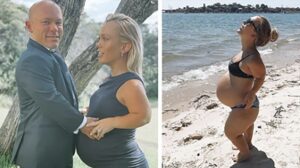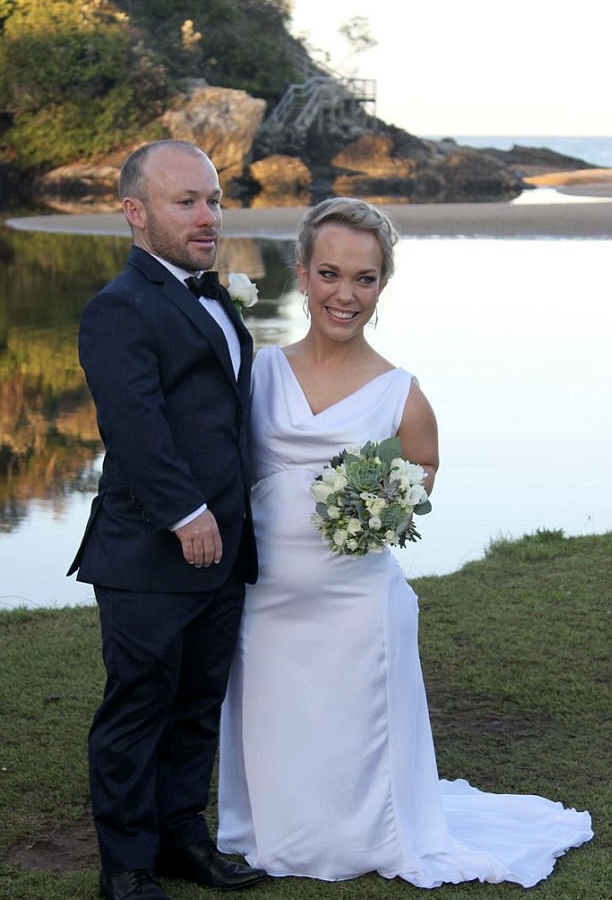Couple with dwarfism defy the odds to have children
Like many married couples, Charli Worgan and her husband Cullen have faced the common question of when they plan to have children. However, their experience has been unique, as they’ve often been asked “why” instead of the typical “when.” This is because both Charli and Cullen have a form of dwarfism, and they often find themselves under public scrutiny, especially when Charli announced her pregnancy with their first child.

The Sydney-based couple’s decision to share their journey with the world started after Charli gave birth to their first daughter. Overwhelmed with joy, Charli decided to create a social media account to offer insight into their family life and educate others about living with dwarfism. Little did she know, her account would quickly gain traction, and now, with over 300,000 followers, Charli has become a source of inspiration for many.
Today, Charli and Cullen have two beautiful daughters, Tully, aged two, and Tilba, aged four, both of whom inherited one of the two types of dwarfism that Charli and Cullen have. Recently, Charli made another major announcement: she was 14 weeks pregnant with their third child. However, her pregnancy reveal came with a bittersweet twist.
For Charli, each pregnancy has meant undergoing painful and sometimes heartbreaking genetic testing. Given their genetic conditions, Charli and Cullen’s children could inherit one type of dwarfism (either from Charli or Cullen), they could be of average height, or, in the most devastating scenario, they could inherit both forms of dwarfism, which doctors have warned would likely be fatal at birth. Charli openly shared the emotional difficulty of not being able to experience the typical joy most mothers feel at the 12-week mark of pregnancy. While many celebrate reaching that point and announcing their pregnancies, Charli was instead preparing for a risky procedure called Chorionic Villus Sampling (CVS), which involves a needle inserted into her abdomen to take a sample of the placenta. The procedure, which carries a 2% risk of miscarriage, is necessary to test the genetic makeup of the baby.
Charli explained that, unlike most expectant mothers who are excited to share their pregnancy news at the 12-week mark, she was anxiously awaiting the results of the CVS test. Their two daughters have one of the two types of dwarfism, so when Charli became pregnant with her third child, she and Cullen were anxiously awaiting to find out which of the four possible outcomes their baby might have:
- The baby could be of average height.
- The baby could have Achondroplasia, the same type of dwarfism as Charli.
- The baby could have Geleophysic Dysplasia, the same type of dwarfism as Cullen.
- The baby could inherit both genetic variations, known as “double dominant dwarfism,” which would likely be fatal.
Charli shared her thoughts and emotions during this challenging time, explaining that her uncertainty was heartbreaking. “I was waiting to find out if I could bring this little one into the world, or if their journey would end here,” she said.
Throughout her journey, Charli has received a fair amount of criticism for her decision to have children despite the risks. In a candid post, she addressed the harsh comments, explaining that many people don’t understand the complexity of their choices. “By sharing this tiny piece of the puzzle, I hope those who doubt can see that bringing a child into this world with these odds is no simple decision,” Charli wrote. “It’s about being kind and understanding.”
Fast forward to the present, and Charli’s family is now complete with three thriving children. Her newest addition, a baby boy named Rip, was born at the end of February. Charli shared a heartfelt post alongside a photo of her and Rip, offering some wise words to fellow parents. “I’m tired, but I’m feeling ever so grateful and lucky,” she said. “There’s no ‘correct’ way to do motherhood, but I’m sure as anything, there’s no ‘wrong’ way either.”
Charli’s journey as a parent is a reminder that, despite the unique challenges she and her family face, the ups and downs of parenthood are universally relatable. Her story shows that no matter the circumstances, the love, joy, and struggles of raising children are experiences that many parents can connect with.
